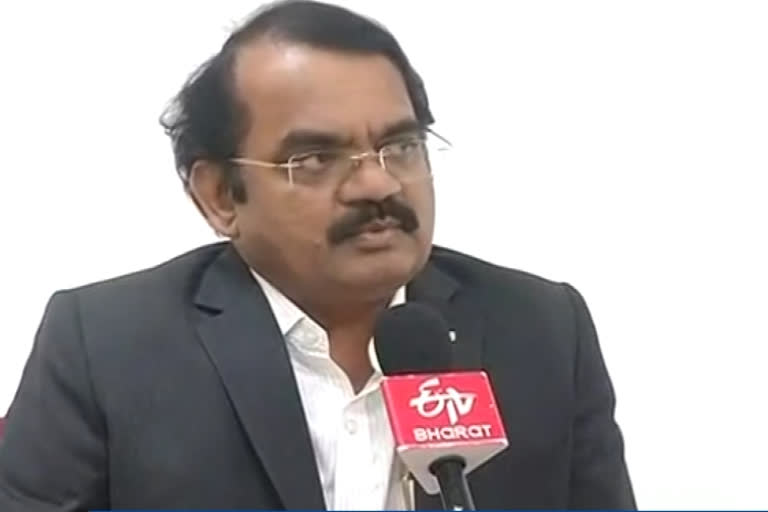Chennai: As India stares at history with Chandrayaan-2 all set to land on the moon, Dr M Annadurai, the Project Director of the preceding Chandrayaan-1 mission on Thursday said that India will now have a meaningful role to play internationally in space programmes, and the mission might lead to colonies on the moon in the near future.
In an exclusive interview with ETV Bharat, Annadurai said that Chandrayaan-2 will be an important milestone for India.
Why South Pole?
Talking about the lunar South Pole, where the 'Vikram' module would make a soft-landing, Annadurai said that all previous landings on the moon were near its equator.
"Chandrayaan-1 made the path-breaking discovery of water on the moon, abundantly seen near the polar region of the moon, that too near the south pole. This brought back attention to the moon," he said.
Adding that subsequent findings beyond Chandrayaan-1 indicated that there exists the possibility of man going back to the moon, Annadurai said that it would happen near the South pole region.
"Chandrayaan-2 will not land where people have repeatedly landed, but it will land where there is a possibility of man going in the future. Hence, the mission is a follow-on to Chandrayaan-1 and also a precursor to future manned missions," he said.
Mission's importance for space research
Explaining about the mission's importance in terms of space research, Annadurai said that it will lead to more international missions to the moon.
"India will play a meaningful role as it will be the first nation to land near the south pole," he said.
"Commercially, it gives trademark to the Indian Space industry. Even now, many industries are trying to be a part of ISRO's efforts. India can play a meaningful role - be it manufacture of satellites or even launching them," he added.
Beyond the commercial aspects, the scientist said that the mission would also inspire youngsters in India to do research in space.
"For future generations, future endeavours, and the entire Indian science team, Chandrayaan-2 is a major milestone," he said.
International Space Station on the moon?
Talking about the prospect of an International Space Station on the Moon, Annadurai said that currently, the ISS is predominantly headed by the USA and its friends.
"There is a need to have another ISS and there have been discussions regarding this. India and China are not really a part of the ISS, but leaving the two nations out in the future may not be correct," he said.
"We put forward the idea that instead of having ISS in the current form, why not use the moon itself. Why not build research stations there. The moon can be used in a much better way," he added.
"I believe, in the next another 3-4 years, numerous follow-on missions to Chandrayaan-2 may lead to modest inhabited colonies on the moon," he further added.
Delay in launch
On the delay in the initial launch date, Annadurai said even though seven days were lost, the landing day remained the same.
"This is the robustness of our mission profile wherein we have a phasing loop concept. The satellite propulsion system takes a longer route and takes a longer amount of time. This plays a role in the overall planning," he said.
"In the case of any untoward incident, before or after the launch, we can finetune the number of days, so that the final day when we land can be kept the same," he added.
India's low-cost lunar mission
Talking about the budget of Chandrayaan-2, Annadurai said that the final cost is slightly higher than what was initially estimated.
"We thought we could manage in about Rs 420-430 crore. But in the original composition, we were to use the GSLV MK II, and it was supposed to be a collaborative mission with Russia, where it was supposed to provide the lander," he said.
"However, after things did not work out with Russia, we were supposed to make both the lander and rover. Since it was our first time, repeated tests were called for, which led to the budget being increased to Rs 978 crore."
"The cost almost doubled from Chandrayaan-1. But still, for a mission of this calibre, budget below Rs 1000 crore is very reasonable," he further added.
Story behind the name 'Chandrayaan'
"Originally, we had another name. The then Prime Minister Atal Bihari Vajpayee accepted the proposal, but he struck off the name. He gave the name Chandrayaan-1," he said.
"However, more than the name, we were thrilled because the Prime Minister added '-1', which indicated there will be many more missions in the future," he added.
Read: Mission Possible: We got exact orbit we wanted, says ISRO chairman



